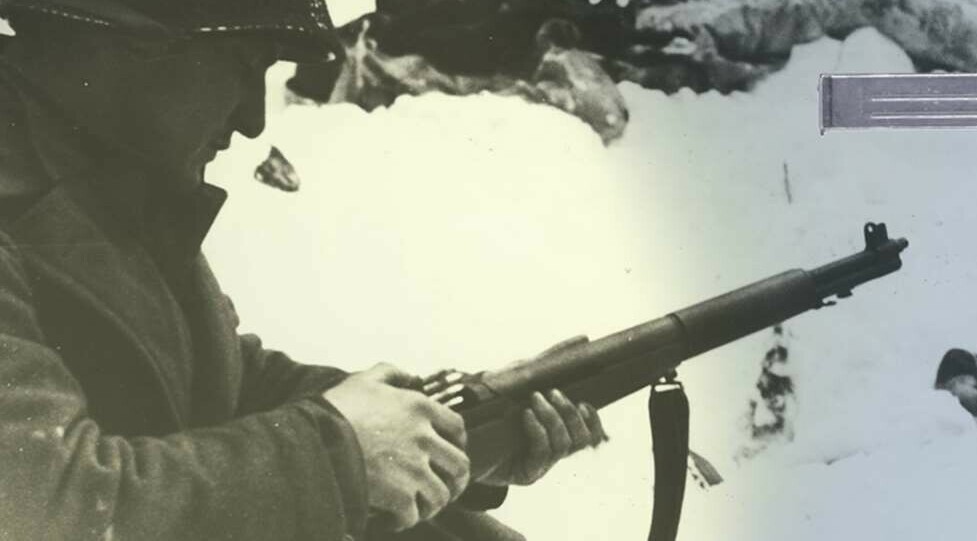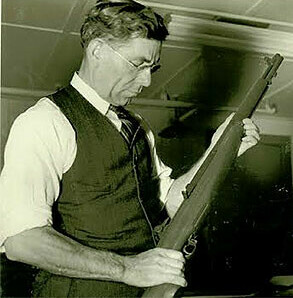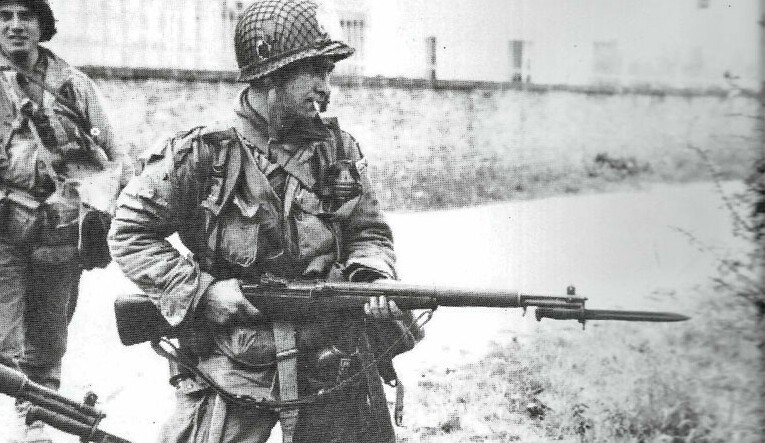So here’s another foray into the world of historical AI content creation. As before, what AI created is in italics; my intelligent input (!) is not and appears at the end. The M1 Garand: The Rifle That Armed The Allies was the title that AI came up with and led to my biggest gripe with this AI post., but more of that later.
I can still hear the echoes of history when I talk about the M1 Garand. This robust piece of machinery wasn’t just a tool for the soldiers of World War II; it became a symbol of hope and strength for the Allies. General George S. Patton didn’t mince words when he called it ‘the greatest battle implement ever devised.’ That level of endorsement says something about its effectiveness and the respect it commanded.
Understanding the M1 Garand starts with its basic features: a semi-automatic, gas-operated .30 calibre rifle that gave U.S. forces a significant firepower advantage. Its eight-round clip system allowed soldiers to fire repeatedly without manually cycling each round, a considerable step up from the bolt-action rifles prevalent at the time.
However, not just the technical specifications made the M1 Garand stand out. The rifle’s presence in the hands of countless soldiers across various conflicts turned the tide in key moments of the war. This tool shaped the outcome of battles and influenced warfare tactics for years to come.

Transitioning into the next section, it’s essential to appreciate that behind every great invention lies a brilliant mind. In the case of the M1 Garand, that mind belonged to John C. Garand, a Canadian-American designer whose ingenuity would revolutionize the standard service rifle. His story isn’t just about technical design; it’s about the innovation that forever changed the landscape of semi-automatic weaponry.
The Design and Innovation of the M1 Garand
The M1 Garand’s conception story is as engaging as its battlefield history. This section will focus on John C. Garand, the man whose innovation reshaped military firepower. His work, unseen to many, bore a semi-automatic masterpiece that marks a pivotal point in weapons technology.

It’s crucial to understand the departure the M1 Garand marked from its predecessors. Bolt-action rifles required soldiers to cycle each round manually. Garand’s design, however, allowed for quicker follow-up shots, giving US forces a distinct tactical advantage.
The semi-automatic operation, fed by an eight-round en-bloc clip, was revolutionary, setting a new standard for infantry rifles. This feature made it not only faster in the firing but also in reloading compared to its contemporaries.
The importance lies in the details—its .30 calibre rounds packed sufficient stopping power, its gas-operated system provided durability, and its careful balance between weight and size made for a weapon suited to the rigours of warfare.

It played a mentoring role, guiding the development of many modern military rifles with its innovative features and reliable performance.
Transitioning from the drawing board to the combat theatre, the M1 Garand earned the engineers’ respect and the soldiers’ trust. Up next, we’ll look at how this iconic rifle became a steadfast ally in the hands of those who defended freedom across the globe.
The M1 Garand in Action: A Soldier’s Companion
Those who served in World War II often share a common reverence for the M1 Garand, a rifle that many credit with saving lives and turning the tides during pivotal battles. Behind every statistic and strategic manoeuvre, there’s a personal story of a soldier relying on this weapon’s trusty performance.
Interviews with veterans yield vivid descriptions of the Garand’s role in combat. Its semi-automatic action allowed American soldiers to fire eight rounds as quickly as they could pull the trigger, a crucial advantage when facing enemy forces. Troops could keep their heads down and maintain a steadier aim, which provided a significant edge over adversaries who often used slower, bolt-action rifles.

Through the muddy trenches of France and the rough terrains of the Pacific islands, the M1 Garand proved a tool of warfare and a lifeline. Soldiers recall the straightforward operation and maintenance of the Garand, often under unfavourable conditions. Its rugged construction meant it could withstand harsh weather, dirt, and the rough-and-tumble of hand-to-hand combat without faltering.
As battles raged and the pressure mounted, the reliability of the M1 Garand made it a beacon of hope. That signature ‘ping’ sound, signalling an empty clip, became synonymous with the relentless spirit of the Allied forces. In the chaos of war, the Garand’s steadfastness was a constant, reinforcing the morale among troops who knew they wielded a superior firearm.
The Legacy and Cultural Impact of the M1 Garand
Decades have passed since the last official shot was fired from an M1 Garand on active duty, yet its reverberations are felt even today in more than just palpable reveries of the past.
Beyond its immediate role in historical conflicts, this rifle has secured a prestigious place in cultural memory, particularly among collectors and history enthusiasts. The rifle can be seen in museums and vintage military shows and is a frequent star in films and documentaries portraying the World War II era.
Crucially, the M1 Garand’s design principles have echoed through the years, influencing the development of modern firearms. While today’s military arsenals may look different, Garand’s DNA persists in contemporary weapon design, a testament to John Garand’s vision and the rifle’s groundbreaking mechanics.

The cultural footprint of the M1 Garand extends into educational realms as well. Teachers and historians often highlight the rifle to discuss technological innovation, war dynamics, and soldiers’ experiences in battle. Not only does the Garand help illuminate history, but it also engages new generations in the lessons of the past.
Commemoration takes tangible form in the efforts of preservation and re-enactment groups. Volunteers and enthusiasts proudly maintain and display M1 Garands as relics and vibrant pieces of living history. These groups work tirelessly to educate the public, ensuring that the contributions of this iconic rifle—and the men who shouldered it—are not forgotten.
Firstly, I’d say that it’s somewhat sensational for my taste. However, many of the details are correct as far as I am aware, but some things demonstrate the limits of the technology again. The most glaring one implies that the Garand was used in trench warfare in France, which is synonymous with World War I rather than II.
Unfortunately, my biggest gripe is the content’s US-centric nature, starting with the title itself. The Garand was by no means the only rifle the Allies used. The Dominion, UK, and Empire forces (ref Al Murray) were mostly armed with variations of Lee Enfield rifles, such as the No4 Mark 1.

This seems to follow the Americanisation of the World War II narrative that has been discussed in previous blogs.
What do you lot think?
BigT


Your penultimate sentence sums it up neatly T. Thank goodness for being saved by the ‘mericunz’ whilst our military were nowhere to be seen and just cowering at home.
That is very attention-grabbing, You’re a very skilled
blogger. I have joined your feed and sit up for searching
for more of your great post. Additionally,
I’ve shared your web site in my social networks